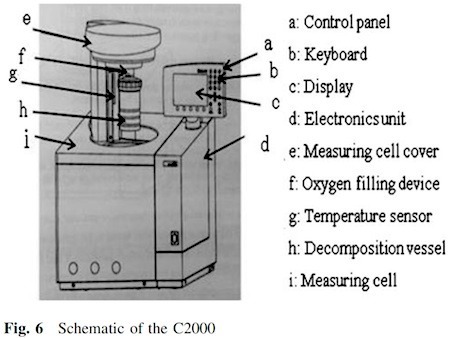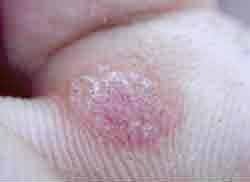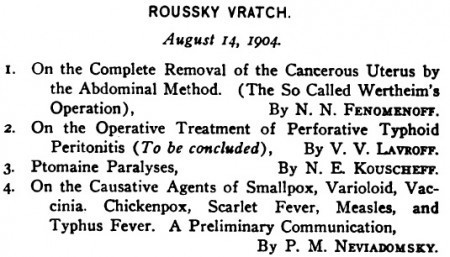Marc Abrahams's Blog, page 395
June 24, 2014
Action Research: All About I
Not all academics write all their papers using the academic “we”. Here is one of those exceptional cases:
“Living Systemic Thinking: Exploring Quality in First-Person Action Research,” Judi Marshall [pictured here], Action Research, September 2004 vol. 2 no. 3, pp. 305-325. The author, at the University of Bath, UK, explains:
“I track a story of inquiry through several phases, including gaining feedback from others about my behaviour. I identify quality issues in first-person action research, also called self reflective inquiry, as I proceed.”

June 23, 2014
Water recreation illnesses
Now that Summer’s (kind of) on the way (for approx. half the globe) what better time to think about mucking around in an interactive fountain? Before you do, however, you could read Issue 1, Vol. 2 of The Wave, published by the US Govt. Centers for Disease Control and Prevention.
“There is no standing water in the attraction so the water shouldn’t get contaminated, right? Wrong.
A 1999 outbreak of diarrheal illness affected 44% of patrons (an estimated 4800 people) who visited a new local interactive water fountain in a beachside park.”
As a specific example, here’s a cautionary note (also from CDC) about a Shigella sonnei and Cryptosporidium parvum outbreak at an Interactive Water Fountain in Florida. And solving such problems is not always straightforward – because chemical additives can produce potentially harmful disinfection byproducts (DBPs) THE DYNAMICS OF VOLATILE DISINFECTION BY PRODUCTS IN INDOOR, CHLORINATED SWIMMING POOLS – HEAVY USE CONDITIONS
Also see: Wee mathematics in Portland, Oregon

June 22, 2014
King Gustaf III’s coffee-kills-which-murderous-twin experiment
This publication alludes to one of the few documented experiments that involved coffee, a king, twins, and death:
“Coffee drinking was compared with tea drinking in monozygotic twins in 18th century,” Lars Breimer, BMJ, vol. 312, June 15, 1996, p. 1539. The author, at the Royal Free Hospital School of Medicine in London, explains:
“One of the more peculiar attempts to throw light on the question of whether drinking coffee is bad for one’s health’ was carried out in the 18th century by King Gustaf III of Sweden…. A pair of monozygotic twins had been sentenced to death for murder. Gustaf III commuted their death sentences to life imprisonment on the condition that one twin drank a large bowl of tea three times a day and that the other twin drank coffee. The twin who drank tea died first, aged 83-a remarkable age for the time. Thus the case was settled: coffee was the less dangerous of the two beverages. The king, on the other hand, was murdered at a masked ball in 1792 at the age of 45 and became the subject of an opera by Verdi.”
Here’s video of part of a performance of that opera:

June 21, 2014
When soy sauce squeezing residue (SSSR) explodes
Bad things can happen when soy sauce goes to waste. Bad things can happen, too, when the residue of making soy sauce goes to waste. This study explains and explores:
“Causes of accidents by soy sauce squeezing residue and fish meal,” Naoharu Murasawa, Hiroshi Koseki, Yusaku Iwata, Journal of Material Cycles and Waste Management, January 2013, Volume 15, Issue 1, pp 42-48. (Thanks to investigator Joe Turner for bringing this to our attention.) The authors report:
“some industrial food waste or recycled waste materials generate heat as a result of fermentation and oxidation, which leads to an increase in temperature during storage and transport, ultimately resulting in spontaneous ignition. In this study, we examined the fermentation and heat generation by soy sauce squeezing residue (SSSR) produced during the brewing of soy sauce and by the fish meal produced during the processing of fish residue….
“The heat of combustion was measured using a bomb-type calorimeter (IKA C2000) in order to understand the combustion severity and risk of fire in the sample. Approximately 500 mg of the sample was completely burned inside the bomb cylinder, which was filled with hyperbaric oxygen. The heat generated was completely absorbed by the water in the tank surrounding the cylinder, and the heat of combustion was measured. A schematic of the C2000 is shown in Fig. 6.”


June 20, 2014
Charming Warts (part 2)
Notwithstanding the persistent lack of understanding of psychogenic influences on warts [see our recent glance at the subject] considerable progress has made in documenting the effects of wart hypnotherapy.
 Some hypnotists maintain that success rates for hypnotic wart removal can reach up to 80%. See, for example: ‘Hypnotherapy for Warts (Verruca Vulgaris): 41 Consecutive Cases with 33 Cures’ in: American Journal of Clinical Hypnosis, Volume 35, Issue 1, 1992. The exact psychogenic pathway for such actions, however, remains a mystery – and, to add to the mysteriousness, Melvin A. Gravitz, Ph.D., A.B.P.H., Clinical Professor of Psychiatry & Behavioral Sciences at George Washington University School of Medicine & Health Sciences in Washington, alerts to the idea that hypnosis can not only cure warts, it can also cause them . . . see: ‘The Production of Warts by Suggestion as a Cultural Phenomenon’ in: American Journal of Clinical Hypnosis, Volume 23, Issue 4, 1981.
Some hypnotists maintain that success rates for hypnotic wart removal can reach up to 80%. See, for example: ‘Hypnotherapy for Warts (Verruca Vulgaris): 41 Consecutive Cases with 33 Cures’ in: American Journal of Clinical Hypnosis, Volume 35, Issue 1, 1992. The exact psychogenic pathway for such actions, however, remains a mystery – and, to add to the mysteriousness, Melvin A. Gravitz, Ph.D., A.B.P.H., Clinical Professor of Psychiatry & Behavioral Sciences at George Washington University School of Medicine & Health Sciences in Washington, alerts to the idea that hypnosis can not only cure warts, it can also cause them . . . see: ‘The Production of Warts by Suggestion as a Cultural Phenomenon’ in: American Journal of Clinical Hypnosis, Volume 23, Issue 4, 1981.
P.S.: If you know of any cases where psychogenic methods have affected warts, either removing them or inducing them, please let us know.

June 19, 2014
Baloney, Bologna, and quibbling over a definition of “poor response”
The word “baloney”, which is just barely a word, is sometimes used by English speakers who want to say, emphatically, “Nonsense!”.
The word may or may not be tightly related to the word “bologna.” Bologna is a kind of inexpensive sandwich meat, the name of which may or may not be derived from”Bologna”, the name of the Italian city.
Language Log hazarded a discussion of the baloney/bologna mess.
Investigator Ted Alston alerts us to a phrase used in one branch of biomedical science: “The Bologna Criteria”. The phrase figures in this academic paper:
“The definition of ‘poor response’: Bologna criteria,” Hassan N. Sallam [pictured here], Fathy Ezzeldin2, Abdel-Fattah Agameya, Ashraf F. Abdel-Rahman and Yehia El-Garem, Human Reproduction, epub November 23, 2011. The authors, in Alexandria, Egypt, explain:
We read with interest the article entitled “ESHRE consensus on the definition of ‘poor response’ to ovarian stimulation for in vitro fertilization: the Bologna criteria” published in the July 2011 issue of Human Reproduction (Ferraretti et al., 2011). In the Abstract section, the authors state that ‘the definition presented here represents the first realistic attempt by the scientific community to standardize the definition of poor ovarian response (POR) in a simple and reproducible manner’. This statement is also repeated in the Conclusion section. Unfortunately, this is not the case. In 2005, we published our work entitled ‘Defining poor responders in assisted reproduction’ in a refereed journal, listed in all important literature search databases (PubMed, EMBase, etc.) (Sallam et al., 2005). However, our work was not mentioned in the list of references….
Now comes further commentary about the Bologna criteria:
“The Bologna criteria for poor ovarian response: the good, the bad and the way forward,” C.A. Venetis, Human Reproduction, epub June 7, 2014.
BONUS: The Canadian Baloney Meter, used to assess political claims

Neviadomsky discovers every germ at once!
The New York Medical Journal‘s “Pith of Current Literature” section contained summaries of the most important findings in other journals. Most importantly, it summarized foreign-language articles – since nobody was translating entire issues of Riforma Medica or Zentralblatt für Gynäkologie, this was unique information.
In the October 1, 1904 issue we learned about the findings of P.M. Neviadomsky. He’d been very busy.
Neviadomsky announces the discovery of a vegetable microorganism which, he claims, is the cause of smallpox. This organism possesses an extraordinary set of morphological and biological properties. Inoculations of cultures of this germ cause the development of a characteristic pustule and the inoculation of the contents of the pustule produces a series of similar pustules in other animals.
Standard implementation of Koch’s postulates. A material is found in diseased animals, and when transferred to healthy animals, it gives them the disease.
The findings continue:
The same microorganisms were found in pure cultures in cases of varioloid and vaccinia. The microorganism thus found, therefore, decides the question as to the relationship of smallpox, varioloid, and vaccinia.
Smallpox and varioloid are caused by the same germ, though this had been known for years (centuries?). Vaccinia is caused by a different germ, which looks the same under an electron microscope — but these should have been invisible in 1904.
At this point the New York Medical Journal editors adopt a tone of amused skepticism.
The author was able to find also a germ which is the cause of chickenpox, but is not identical with that of smallpox. He was not satisfied with these discoveries, and found, further, the germs of scarlet fever and measles respectively, which resembled each other in shape but varied considerably as to their biological properties. The author promises to publish further details later.
That’s a lot for one paper! We don’t know if those further details were ever published, since we don’t speak Russian, and there are a myriad of ways to transliterate “Neviadomsky” and “Roussky Vratch” into English, but it seems unlikely.
One more Neviadomsky finding (now spelled Neviadomski) appeared the following year’s N.Y. Med J. That one was limited to smallpox.
Follow Amboceptor on Twitter: @AmboceptorBlog

June 18, 2014
Preview of the Ig Nobel shows in Copenhagen
A gaggle of Ig Nobel Prize winners and I will be in the oft-magical city of Copenhagen, doing Ig Nobel shows as part of ESOF, in June. The Ig Nobel winners:
Dr. Elena Bodnar (inventor of the Chernobyl-inspired Emergency Bra)
Magnus Whalberg (co-discoverer: herring apparently communicate by farting)
Emily Baird and Marie Dacke (co-discoverers of the ability of dung beetles to navigate by using the Milky Way)
Kees Moeliker (discoverer of homosexual necrophilia in the mallard duck)
WHEN: June 22 (Sunday) and June 24 (Tuesday), 2014, 7:00-9:00 pm
WHERE: Science in the City, ESOF, Copenhagen, Denmark — in The Rethink District, Carlsberg Byen, Enghave Plads
The ScienceNordic web site wrote a preview of the shows. Here’s a snippet:
… A commission was set up to investigate and Wahlberg’s research group were given the task of solving the mystery of the submarine sounds. They travelled to Stockholm and listened to the ‘secret’ sounds – and were surprised by what they heard.
“We immediately ruled out that these were sounds from submarines,” he says. However, they still didn’t recognise the source so Wahlberg brought the recordings to his lab to find explanations. He eventually found it and it turned out to be a most unlikely source.
“We discovered that the sounds came from herring who farted,” he says.
“If only we’d described the fish farts sooner, we could’ve kept the Swedish defence budget a little lower and Sweden and Russia would have had a better relationship towards the end of the cold war. The whole affair caused a diplomatic crisis between the two countries,” says Wahlberg.…

Charming Warts (part 1)
“The process whereby warts, the result of a virus infection, can be affected by psychogenic influences, as occurs in wart charming, is not understood.”
A resumé of the state of knowledge as it was in 1956, was presented, in Question and Answer form, in the British Medical Journal, Jul 14, 1956; 2(4984): p.112. [page 2 in the pdf]
“Q.-What is the technique of wart charming?
A.-The process whereby warts, the result of a virus infection, can be affected by psychogenic influences, as occurs in wart charming, is not understood. It would seem that nervous impulses from the cerebrum must affect the skin, in some way producing conditions unsuitable for the growth of warts. Perhaps there is an alteration in the blood supply or in the moisture of the skin. Certainly sweating predisposes to warts. The technique of wart charming is as varied as it is ancient. It is often based on a form of magic, the intention being to transfer the warts to some other person or animal or object. Thus the warts may be touched by a lump of raw beefsteak, which is then buried at midnight at a crossroads in the light of a full moon. The warts disappear, having been transferred to the meat. The moon was thought to have considerable influence on warts. Sir Kenelm Digby in the seventeenth century had an infallible cure. The hands were washed by the light of moonbeams in a polished silver basin in which was no water. Alternatively, warts might be transferred to an animal such as a black slug or a toad. If someone who has no warts kills the toad, then he will get as many warts as the toad has spots.
Sir James Frazer, in The Golden Bough, mentions a fourth-century cure for warts. You touch your warts with as many little stones as you have warts. Then wrap the stones in an ivy leaf and throw them away. Whoever picks them up will get the warts and you will be rid of them. The wart charmer in Ireland would visit a village, make a careful note in his hat of the number of your warts, and take them with him on his departure. The buying of warts by a friend is still, at times, found efficacious. X-radiation in small doses and hypnotism are other techniques now practised in wart charming.”
Note: As far as Improbable is aware, since 1956, no further progress has been made regarding the understanding of how psychogenic influences might affect warts. If you have information to suggest otherwise, please let us know by commenting below.
Coming soon: Charming Warts (part 2)

June 17, 2014
Three million looks at sex-in-an-MRI video
Medical students and other interested persons have now made more than three million (3,000,000) examinations of the historic, Ig Nobel Prize-winning, first-ever MRI video of human sexual organs performing their traditional role.
The 2000 Ig Nobel Prize for medicine was awarded to Willibrord Weijmar Schultz, Pek van Andel, and Eduard Mooyaart of Groningen, The Netherlands, and Ida Sabelis of Amsterdam, for their illuminating report, “Magnetic Resonance Imaging of Male and Female Genitals During Coitus and Female Sexual Arousal.” [Published in the British Medical Journal (BMJ), vol. 319, 1999, pp. 1596-1600.] The video was kept secret for several years, then had its public debut as part of an Ig Nobel tour of the UK (for the UK’s National Science Week). Here’s the video:
BONUS FACT: We are told that that article in the BMJ is, by a large margin, the most viewed article on the entire BMJ web site. And has been for a very long time.
Here’s a Dutch documentary about the people in the MRI experiment:
BONUS ITEMS FROM THE PAST:
Two million looks at sex in an MRI Tube
Million watchers of sex-in-an-MRI
To make love as a testee
Medical imaging: What is porn?
Further adventures of Pek and Marc

Marc Abrahams's Blog
- Marc Abrahams's profile
- 14 followers





